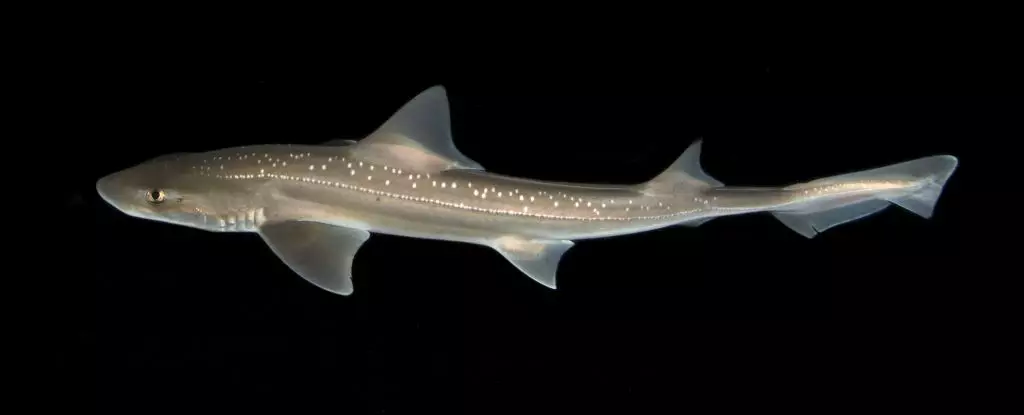For decades, sharks have curled into our collective imagination as the quintessential merciless predator of the ocean—the bloodthirsty beast drifting silently through the depths, waiting to pounce. However, this fearsome persona might have been envisioned with grossly exaggerated qualities. New research reveals that the very creatures considered stoic and mute are, in fact, capable of producing sounds—a groundbreaking discovery that paves the way for a completely different understanding of their behavior and communication. The recent announcement that sharks create specific clicking noises is not merely a scientific finding; it pulls back the curtain on a world that may have more layers of complexity than we ever realized.
This revelation should shake the very foundations of how we perceive these majestic creatures. Instead of being silent enforcers of the sea, sharks now take on the role of vocal beings with perhaps intricate social interactions. The study conducted by Carolin Nieder and her team at the Woods Hole Oceanographic Institute puts forth compelling evidence that the silence long attributed to sharks was an audacious misjudgment. Perhaps, we were too quick to label them as mere “killing machines” without appreciating the possibility of depth in their existence—that they might use sound for more than just the savage pleasure of predation.
The Click of Discovery
The focus of this monumental research was on the Mustelus lenticulatus species, also known as rigs. What sets this discovery apart isn’t just the act of making noise but the sheer volume and purpose behind these clicks. Recorded at an impressive level of up to 166 decibels—akin to the deafening crack of a firecracker—these clicks demand attention. If such sounds were to be found in any other realm of animal communication, it would likely make headlines. Yet here we are, entrusting the narrative of sharks to dismal silence until now.
Through careful experimentation, researchers discovered that juvenile rigs produced these vocalizations when subjected to handling in experimental settings. Initially, they speculated whether the sounds were mere artifacts of the stressful situations imposed upon them. But as the studies continued, they reconsidered; the clicks were not just reactions to discomfort but might serve as a form of communication or even possibly distress signals.
The implications of this find extend beyond the confines of experimental settings. If these clicks constitute a significant aspect of shark communication, how many forms of exchanges have gone overlooked? The underwater landscape may be alive with voices we have yet to decode. The ability of marine animals to communicate through sound, often overlooked, demands a reevaluation of how we understand predator-prey relationships and social structures in marine ecosystems.
The Need for Further Inquiry
What the researchers have unveiled is but a scratch on the surface of an uncharted territory in marine biology. While the researchers conjectured that rigs might snap their jaws to create these sounds, a myriad of questions remain. For example, can the sharks hear their own clicks? This aspect alone could determine whether these sounds are intentional communications or incidental reactions to trauma. An encounter with scientific inquiry leads us back to the ocean, a realm from which humans have historically wrested limited insight.
Additionally, this newfound understanding does something more profound—it challenges our preconceptions about marine life and compels a reconsideration of how we relate to these creatures. The ocean is replete with numerous forms of communication, particularly among elasmobranchs like sharks, rays, and skates. What’s next? Are there other shark species engaging in vocalizations previously attributed only to their distant relatives? This discovery should inspire curiosity in students of marine life, offering a treasure trove of avenues for future exploration.
Time to Rethink Our Relationship with Sharks
The societal fear of sharks as monsters would benefit from a thoughtful update. Instead of vilifying them as mindless, lurking predators, we should acknowledge that they are more than just their lethal reputation—they are complex beings capable of communication and interaction within their environment. The transformation that is ushered in by this research could very well alter our conservation efforts. Instead of simply protecting sharks as solitary predators, we now see them as integral components of a collaborative underwater community.
It’s time we shed our outdated depictions of marine monsters and embrace the truth—sharks, while fierce, are also intricate entities engaged in ecological dialogues hidden from human ears. With further research unfolding, may we begin to observe them not just with fear but with fascination and respect. The marine depths still hold secrets waiting to be uncovered, and the recent discoveries signal that we are only beginning to understand the cacophony of life beneath the waves.
In sum, it’s a wakeup call—if these ocean leviathans are capable of sharing their vulnerabilities through sound, it is high time we listen.


Leave a Reply